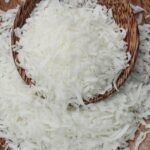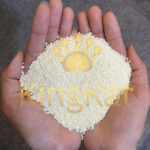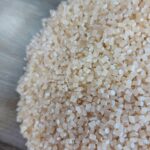CASHEW NUT SHELL OIL

Table of Contents
ToggleIntroduction
Cationic tapioca starch is transforming the paper industry, offering a powerful and sustainable solution to enhance the physical and chemical properties of paper. With its positively charged nature, cationic tapioca starch interacts strongly with negatively charged surfaces and particles, boosting production efficiency and reducing environmental impact. This article explores the groundbreaking applications of cationic tapioca starch in the paper industry, highlighting its benefits and the potential for sustainable innovation in 2024.
What is Cationic Tapioca Starch?
Cationic tapioca starch is created through the chemical modification of natural tapioca starch, where amino or ammonium groups are added to the starch molecule, giving it a positive charge. This modification retains the fundamental properties of tapioca starch while adding the ability to interact with negatively charged particles in paper pulp, making it a versatile and valuable additive.
Transformative Applications in the Paper Industry
1. Enhanced Retention and Drainage
Cationic tapioca starch is a game-changer as a retention and drainage aid in paper manufacturing. Its positive charge helps bind fine particles and fillers, retaining them within the paper sheet and improving quality. This leads to reduced solid waste in wastewater, promoting a more efficient and sustainable paper production process.
Key Benefits:
- Improved Particle Binding: The positive charge of cationic tapioca starch effectively binds with negatively charged fine particles and fillers.
- Superior Paper Quality: Enhanced retention leads to smoother surfaces, better printability, and higher opacity.
- Waste Reduction: Minimizes solid waste in effluents, making wastewater treatment more efficient and less costly.
2. Boosting Dry Strength
Cationic tapioca starch is widely used to enhance the dry strength of paper. When added to paper pulp, the starch forms strong bonds with cellulose fibers, increasing the paper’s tensile strength, burst strength, and tear resistance. This is particularly beneficial for packaging paper and office stationery.
Key Benefits:
- Stronger Fiber Bonds: Cationic starch forms hydrogen bonds with cellulose fibers, strengthening the fiber network.
- Enhanced Durability: Papers treated with cationic starch are more resistant to tearing and bursting.
- Cost-Effective: Using cationic starch is more economical than synthetic polymers and enhances recyclability.
3. Enhancing Wet Strength
For applications requiring paper to maintain strength when wet, such as paper towels and food packaging, cationic tapioca starch is essential. It forms durable bonds with cellulose fibers that resist water, ensuring the paper retains its structural integrity.
Key Benefits:
- Water Resistance: Forms strong, water-resistant bonds that help paper maintain integrity when wet.
- Application Versatility: Crucial for products like paper towels, napkins, and food packaging.
- Long-Lasting Durability: Withstands repeated wetting and drying cycles, extending the paper’s useful life.
Economic and Environmental Advantages
1. Reducing Chemical Usage
By improving the retention of fine particles and fillers, cationic tapioca starch reduces the need for additional chemical additives. This lowers production costs and minimizes the environmental impact associated with chemical-laden wastewater.
Key Benefits:
- Cost Savings: Reduces reliance on expensive synthetic retention aids and drainage agents.
- Environmental Impact: Lower chemical usage results in cleaner effluent, easing the burden on wastewater treatment facilities.
2. Improving Recyclability
Paper products treated with cationic tapioca starch generally have higher fiber recovery rates during recycling, contributing to a more sustainable paper lifecycle.
Key Benefits:
- Higher Fiber Recovery: Enhanced strength properties aid in the recovery of longer, more intact fibers during recycling.
- Sustainability: Improved recyclability supports a circular economy, reducing the demand for virgin pulp.
3. Sustainable Sourcing
Cationic tapioca starch is derived from tapioca, a renewable and abundant natural resource. Its use aligns with the growing demand for sustainable and eco-friendly materials in the paper industry.
Key Benefits:
- Renewable Resource: Tapioca is a fast-growing crop with a low environmental footprint.
- Eco-Friendly Production: The production process for cationic tapioca starch is less energy-intensive and generates fewer emissions.
Challenges and Future Prospects
While the advantages are significant, the use of cationic tapioca starch also presents challenges, such as potential interference with the deinking process during paper recycling. However, ongoing research and development efforts aim to address these issues.
Future Prospects:
- Innovative Formulations: Research is focused on developing new formulations that maintain the benefits of cationic starch while mitigating negative impacts on recycling.
- Sustainable Practices: Integrating cationic tapioca starch with other sustainable practices, such as bio-based fillers and green energy sources, can further enhance sustainability in paper production.
Conclusion
Cationic tapioca starch is revolutionizing the paper industry in 2024, offering significant improvements in quality, efficiency, and sustainability. Its economic and environmental benefits make it a valuable additive in paper production. With continuous innovation and development, cationic tapioca starch will continue to play a pivotal role in producing high-quality, sustainable paper products, meeting the growing demands of the market and consumers.












